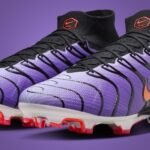Truck tire blowouts are a significant concern, especially during the warmer months. Understanding why truck tires blow out more in hot weather is crucial for drivers aiming to maintain safety and prevent accidents.
Factors Contributing to Tire Blowouts in Hot Weather
- UnderinflationUnderinflated tires are a leading cause of blowouts. When a tire lacks sufficient air pressure, it flexes more than intended, increasing friction and heat buildup. This excessive heat can cause the tire components to deteriorate, leading to failure.
- OverloadingExceeding a tire’s load capacity places additional stress on its structure. Combined with high temperatures, this stress can accelerate tire degradation and increase the likelihood of a blowout.
- Excessive Heat BuildupHigh ambient temperatures contribute to increased tire pressure as the air inside expands. This expansion can push tires beyond their designed pressure limits, especially if they are already overinflated, leading to potential blowouts.
- Poor Tire MaintenanceNeglecting regular tire maintenance, such as checking pressure levels, inspecting for wear and tear, and ensuring proper alignment, can exacerbate issues during hot weather. Worn or damaged tires are more susceptible to failure under increased thermal stress.
Preventive Measures
- Regular Inspections: Conduct thorough pre-trip inspections to identify any signs of tire damage or wear.
- Maintain Proper Inflation: Use a reliable gauge to ensure tires are inflated to the manufacturer’s recommended levels, adjusting for temperature variations.
- Avoid Overloading: Adhere to load capacity guidelines to prevent undue stress on tires.
- Monitor Driving Speed: High speeds increase heat buildup in tires; maintaining moderate speeds can help mitigate this risk.
Conclusion
Understanding the reasons behind increased truck tire blowouts in hot weather is essential for implementing effective preventive measures. By maintaining proper tire pressure, avoiding overloading, and conducting regular maintenance, drivers can reduce the risk of blowouts and ensure safer travels during warmer months.
FAQ
- Why are underinflated tires more prone to blowouts in hot weather?Underinflated tires flex excessively, generating additional heat, which, when combined with high ambient temperatures, can lead to tire failure.
- How does overloading affect tire performance in the heat?Overloading increases stress on tires, and when coupled with elevated temperatures, it accelerates tire degradation, increasing the risk of blowouts.
- Can high speeds contribute to tire blowouts during hot weather?Yes, driving at high speeds generates more heat in tires, which, in hot conditions, can exacerbate the risk of blowouts.
- What maintenance practices can help prevent tire blowouts in warm climates?Regularly checking tire pressure, inspecting for wear and damage, ensuring proper alignment, and avoiding overloading are key practices to prevent blowouts.
- How does ambient temperature influence tire pressure?As ambient temperatures rise, the air inside the tires expands, increasing internal pressure, which can lead to overinflation and potential blowouts if not monitored.
Read on to know more about mathews-funeral-home-obituaries










